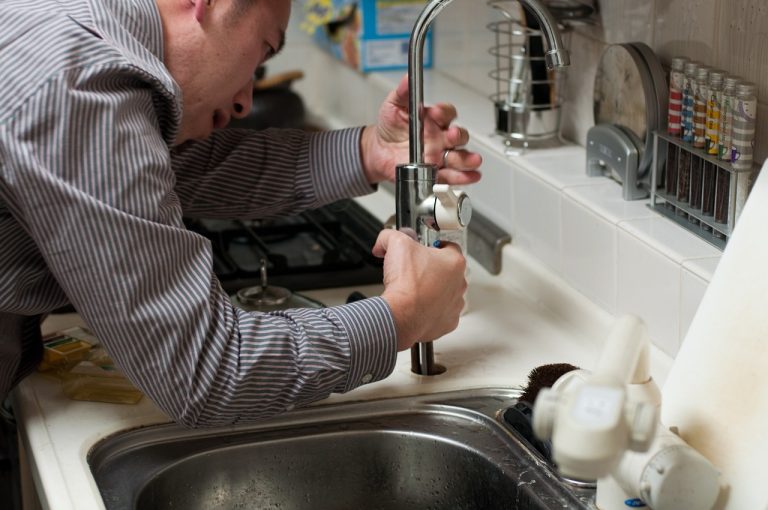5 Signs It’s Time to Repave Your Asphalt Driveway
If your asphalt driveway shows cracks wider than 1/4 inch, potholes, pooling water, faded color, or rough surfaces, it’s time to consider repaving. These signs indicate underlying damage that can worsen over time, leading to costly repairs. Early intervention not only restores functionality but also enhances curb appeal. For expert guidance, consult professionals who can help you make informed decisions.
Table of Contents
- Why Asphalt Driveway Maintenance Matters
- 5 Signs It’s Time to Repave Your Asphalt Driveway
- Steps to Take Before Repaving Your Driveway
Picture this: You pull into your driveway after a busy day, only to notice deep cracks snaking across the surface and puddles forming where there used to be smooth asphalt. Your driveway, once a reliable and attractive feature of your home, now looks worn and neglected. This scenario is more common than you might think, especially in Canada, where harsh winters and fluctuating temperatures take a toll on asphalt surfaces.
An asphalt driveway isn’t just a functional space – it’s an investment in your property’s value and safety. Over time, wear and tear are inevitable, but ignoring these issues can lead to bigger problems, such as structural damage or reduced resale value. Recognizing the warning signs early can save you from expensive fixes later. Whether you’re dealing with minor cracks or extensive damage, addressing these issues promptly secures your driveway remains both safe and visually appealing. For instance, many homeowners find that timely attention to their asphalt driveway paving needs can prevent further deterioration while enhancing their property’s overall appearance.
In this guide, we’ll walk you through five clear indicators that it’s time to repave your driveway, along with actionable steps to secure your decision is both timely and cost-effective.
Why Asphalt Driveway Maintenance Matters
Your driveway is more than just a surface – it’s a critical component of your home’s functionality and aesthetics. Regular maintenance secures it remains both durable and visually appealing, but neglecting it can lead to costly consequences. Here’s why staying on top of asphalt driveway care is so important:
Prevents Costly Repairs
Small issues like hairline cracks or minor fading may seem insignificant at first, but they can quickly escalate into major problems. For instance, untreated cracks allow water to seep beneath the surface, where it freezes and expands during winter. This process, known as frost heaving, can cause widespread damage that’s far more expensive to fix than addressing the initial crack.
Extends Lifespan
A well-maintained asphalt driveway can last 20-30 years with proper care. Regular sealcoating, timely repairs, and attention to drainage issues help protect the surface from environmental stressors like UV rays, rain, and snow. By investing in maintenance, you’re essentially extending the life of your driveway, delaying the need for a full repave.
Enhances Safety
Cracks, potholes, and uneven surfaces aren’t just eyesores – they’re potential hazards. Potholes can damage vehicle tires and suspension systems, while uneven surfaces pose tripping risks for pedestrians. A smooth, well-paved driveway secures safe navigation for both vehicles and people.
Boosts Curb Appeal
First impressions matter, and your driveway is one of the first things visitors notice about your home. A cracked, faded, or uneven driveway can detract from your property’s overall appearance. On the other hand, a freshly paved or well-maintained driveway adds instant curb appeal, making your home look polished and well-cared-for.
Protects Property Value
Your driveway is part of your home’s exterior infrastructure, and its condition can influence your property’s market value. Prospective buyers are more likely to view a home with a pristine driveway as a well-maintained property overall. Neglecting driveway repairs, however, could raise red flags and reduce your home’s perceived value.
5 Signs It’s Time to Repave Your Asphalt Driveway
Knowing when to repave your driveway can save you from costly repairs and secure your property remains safe and attractive. Here are five key indicators that it’s time to consider repaving:
1. Cracks Beyond Minor Wear and Tear
- What to Look For: Small, hairline cracks are normal due to seasonal temperature changes. However, if you notice wide cracks (over 1/4 inch) or an extensive network of cracks, it’s a sign of deeper issues.
- Why It Matters: These cracks often indicate structural damage, poor installation, or lack of regular sealcoating. Water can seep through these cracks, freeze during winter, and cause further deterioration.
- What You Can Do: While minor cracks can be filled with crack sealant, widespread cracking may require full repaving to restore the driveway’s integrity.
2. Potholes That Compromise Safety
- What to Look For: Potholes form when cracks deepen and erode the base material underneath the asphalt. They create uneven surfaces that are both unsightly and hazardous.
- Why It Matters: Potholes not only pose tripping risks for pedestrians but also damage vehicle tires and suspension systems. Driving over potholes repeatedly can lead to expensive car repairs.
- What You Can Do: Patching individual potholes might provide a temporary fix, but if they’re appearing frequently or across large areas, it’s a strong indication that your driveway needs repaving.
3. Pooling Water Indicates Drainage Issues
- What to Look For: After rainfall or snowmelt, does water collect on your driveway instead of draining away? This pooling is a red flag.
- Why It Matters: Proper drainage is crucial for preventing water from weakening the asphalt. Standing water accelerates surface degradation and can lead to frost heaves or sinkholes.
- What You Can Do: Minor grading adjustments might solve small drainage problems, but persistent pooling suggests the need for a complete repave to restore proper slope and functionality.
4. Faded Color and Surface Deterioration
- What to Look For: Fresh asphalt has a rich, dark black color that fades over time due to UV exposure and oxidation. If your driveway looks dull, gray, or rough to the touch, it’s showing signs of advanced aging.
- Why It Matters: Faded color indicates that the surface has lost its flexibility and is becoming brittle. This makes it more susceptible to cracks, chips, and other forms of damage.
- What You Can Do: Sealcoating can temporarily restore color and protect the surface, but if the deterioration is severe, repaving is the best long-term solution.
5. Rough or Uneven Surfaces
- What to Look For: Are there ridges, bumps, or uneven areas that make driving or walking uncomfortable? These imperfections can develop due to shifting soil, poor compaction during initial paving, or prolonged wear and tear.
- Why It Matters: Uneven surfaces not only reduce curb appeal but also increase the risk of accidents. For example, vehicles can scrape against raised edges, and pedestrians may trip over uneven patches.
- What You Can Do: Resurfacing can smooth out minor irregularities, but significant unevenness often requires full repaving to restore a level and functional driveway.
Steps to Take Before Repaving Your Driveway
Before committing to repaving, it’s important to assess the situation thoroughly and plan ahead. Here’s a detailed breakdown of the steps you should take:
| Step | Description | Key Considerations | Why It’s Important |
| 1 | Inspect Your Driveway for Visible Damage | Look for cracks, potholes, pooling water, faded color, rough surfaces, and uneven areas. Take photos. | Identifying the extent of damage helps determine whether repairs or full repaving is necessary. |
| 2 | Consult with Professionals for Expert Advice | Reach out to experienced contractors who specialize in asphalt driveway maintenance and repaving. | Professionals can provide accurate assessments, recommend solutions, and help avoid costly mistakes. |
| 3 | Obtain Detailed Quotes from Multiple Providers | Request quotes that include costs for materials, labor, permits, and warranties. Compare services. | Comparing quotes secures you get competitive pricing and high-quality workmanship. |
| 4 | Research and Verify Contractor Credentials | Check licenses, insurance, reviews, and past projects. Ask for references from previous clients. | Hiring a reputable contractor minimizes risks and secures the job is done correctly. |
| 5 | Choose the Right Season for Optimal Results | Schedule the work during warmer months (late spring to early fall) when asphalt cures best. | Proper curing conditions are essential for durability and longevity of the newly paved surface. |
| 6 | Prepare Your Driveway and Surrounding Area | Clear debris, remove obstacles, and secure proper access for equipment. Notify neighbors if needed. | A clean and accessible workspace secures the project runs smoothly without delays. |
| 7 | Plan for Post-Repaving Maintenance | Discuss sealcoating schedules and long-term maintenance tips with your contractor. | Regular upkeep after repaving extends the lifespan of your driveway and maximizes your investment. |
Conclusion: Extend the Life of Your Asphalt Driveway
Your asphalt driveway is more than just a functional surface – it’s an integral part of your property that contributes to safety, aesthetics, and value. Over time, wear and tear are inevitable, but recognizing the signs that indicate the need for repaving can save you from costly repairs and secure your driveway remains both durable and visually appealing.







